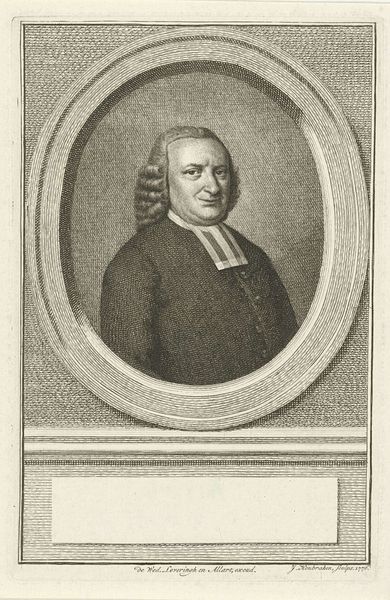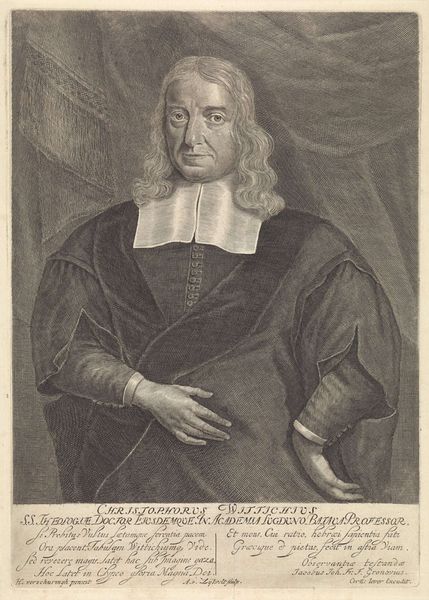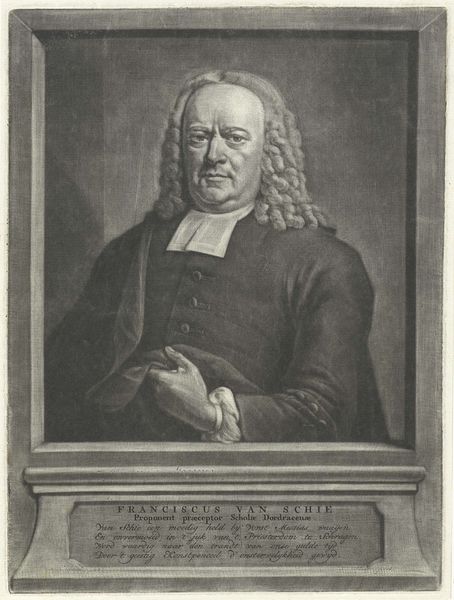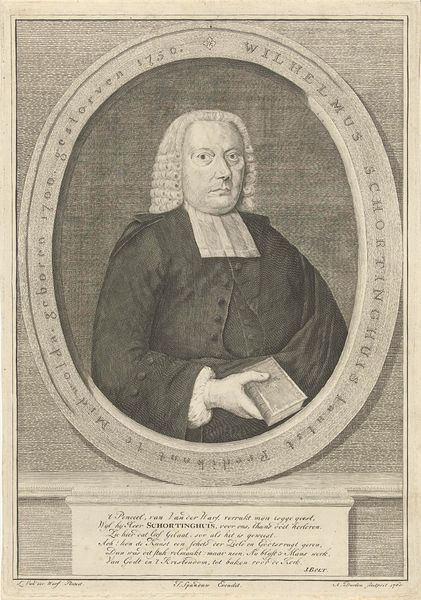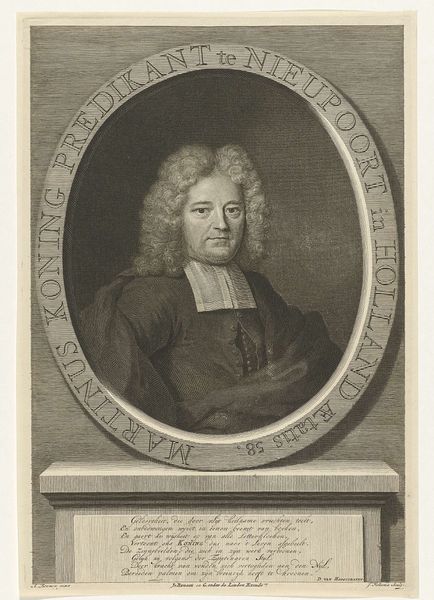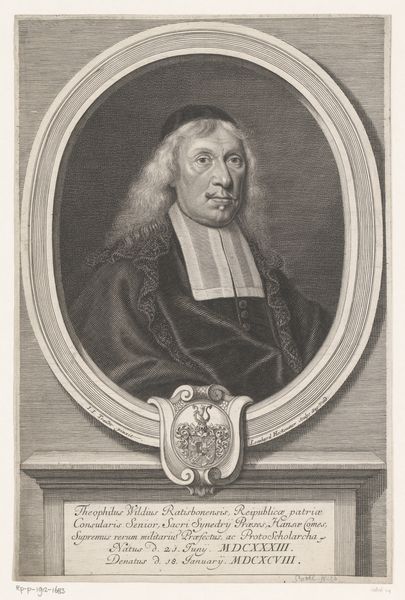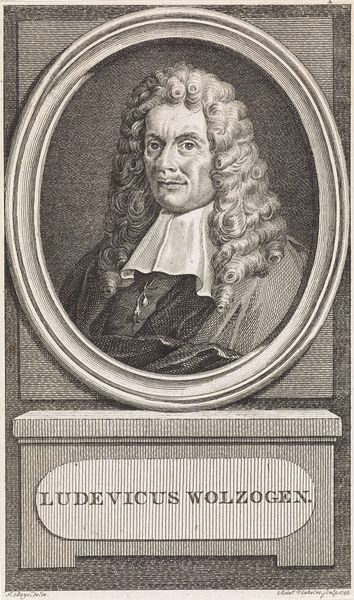
print, engraving
#
portrait
#
baroque
#
portrait image
# print
#
portrait drawing
#
genre-painting
#
history-painting
#
engraving
Dimensions: height 243 mm, width 185 mm
Copyright: Rijks Museum: Open Domain
Curator: Here we have Pieter Schenk's "Portret van Ernst Ludwig Aveman," likely dating between 1689 and 1713, a beautiful engraving held in the Rijksmuseum. What strikes you about it? Editor: The sheer weight of him, visually speaking! Everything feels dense and deliberate—the textures of his robes, that determined jawline, the Latin text encircling him like a fortified wall. What's the medium? Curator: It’s an engraving, so essentially lines etched into a metal plate, then inked and printed. Look closely and you’ll see how Schenk uses incredibly fine lines to create light and shadow. Editor: It's incredible the kind of detailed work someone could put into such a method. What type of paper did they often use back then for such things? I can only imagine what the engraving plate would be composed of, and how long it might have taken them. Curator: Well, the paper would've likely been handmade, perhaps linen-based for durability and a smooth surface. As for Aveman himself, he appears to be someone of importance, judging by his clothing and those…are those medallions? Editor: Exactly! Those are key. We've got potent visual signifiers of status: the expertly crafted metal, velvet and silk finery, all the labor put into his position reflected back in the objects themselves. The portrait immortalizes more than just the person. Curator: A fascinating interpretation. The gaze itself feels weighted with self-importance. There's also a certain humanity there. The Baroque era always seemed to manage that interplay between grandeur and intimacy so well, don't you think? Editor: Definitely, you know, I can't help but think about who actually owned these prints. What was the culture of display and collecting surrounding portrait engravings like in that period? Was it only other nobility acquiring prints, or common folk too? How were they produced? Curator: Interesting questions. Schenk was quite a prolific printmaker. Imagine the workshops churning these out! Editor: That’s right. Thinking about the system of labor bringing this image into being reframes how I think about the individual. I'll consider Schenk's production habits the next time I study portraits! Curator: Absolutely. A single artwork becomes a portal into layers of meaning!
Comments
No comments
Be the first to comment and join the conversation on the ultimate creative platform.


